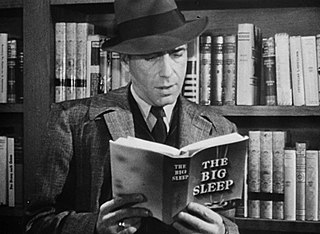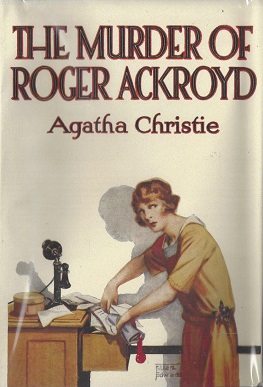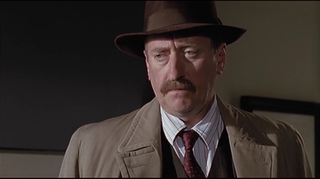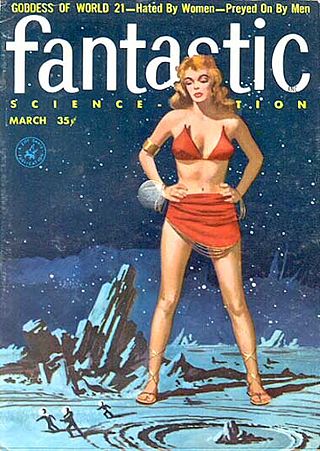
Detective fiction is a subgenre of crime fiction and mystery fiction in which an investigator or a detective—whether professional, amateur or retired—investigates a crime, often murder. The detective genre began around the same time as speculative fiction and other genre fiction in the mid-nineteenth century and has remained extremely popular, particularly in novels. Some of the most famous heroes of detective fiction include C. Auguste Dupin, Sherlock Holmes, and Hercule Poirot. Juvenile stories featuring The Hardy Boys, Nancy Drew, and The Boxcar Children have also remained in print for several decades.

Edmund Clerihew Bentley, who generally published under the names E. C. Bentley or E. Clerihew Bentley, was an English novelist and humorist, and inventor of the clerihew, an irregular form of humorous verse on biographical topics.

A whodunit or whodunnit is a complex plot-driven variety of detective fiction in which the puzzle regarding who committed the crime is the main focus. The reader or viewer is provided with the clues to the case, from which the identity of the perpetrator may be deduced before the story provides the revelation itself at its climax. The investigation is usually conducted by an eccentric, amateur, or semi-professional detective.

Crime fiction, detective story, murder mystery, mystery novel, and police novel are terms used to describe narratives that centre on criminal acts and especially on the investigation, either by an amateur or a professional detective, of a crime, often a murder. It is usually distinguished from mainstream fiction and other genres such as historical fiction or science fiction, but the boundaries are indistinct. Crime fiction has several subgenres, including detective fiction, courtroom drama, hard-boiled fiction, and legal thrillers. Most crime drama focuses on crime investigation and does not feature the courtroom. Suspense and mystery are key elements that are nearly ubiquitous to the genre.

Trent's Last Case is a detective novel written by E. C. Bentley and first published in 1913. Its central character, the artist and amateur detective Philip Trent, reappeared subsequently in the novel Trent's Own Case (1936), and the short-story collection Trent Intervenes (1938).

Ellery Queen is a pseudonym created in 1928 by the American detective fiction writers Frederic Dannay (1905–1982) and Manfred Bennington Lee (1905–1971). It is also the name of their main fictional detective, a mystery writer in New York City who helps his police inspector father solve baffling murder mysteries. Dannay and Lee wrote most of the novels and short story collections in which Ellery Queen appears as a character, and these books were among the most popular American mysteries published between 1929 and 1971. Under the pseudonym Ellery Queen, they also edited more than thirty anthologies of crime fiction and true crime. Dannay founded, and for many years edited, the crime fiction magazine Ellery Queen's Mystery Magazine, which has been published continuously from 1941 to the present. From 1961 onwards, Dannay and Lee commissioned other authors to write thrillers using the pseudonym Ellery Queen, but not featuring Ellery Queen as a character; some such novels were juvenile and were credited to Ellery Queen Jr. They also wrote four mysteries under the pseudonym Barnaby Ross, which featured the detective Drury Lane. Several movies, radio shows, and television shows were based on their works.

Mystery is a fiction genre where the nature of an event, usually a murder or other crime, remains mysterious until the end of the story. Often within a closed circle of suspects, each suspect is usually provided with a credible motive and a reasonable opportunity for committing the crime. The central character is often a detective, who eventually solves the mystery by logical deduction from facts presented to the reader. Some mystery books are non-fiction. Mystery fiction can be detective stories in which the emphasis is on the puzzle or suspense element and its logical solution such as a whodunit. Mystery fiction can be contrasted with hardboiled detective stories, which focus on action and gritty realism.

Philip Marlowe is a fictional character created by Raymond Chandler who was characteristic of the hardboiled crime fiction genre. The genre originated in the 1920s, notably in Black Mask magazine, in which Dashiell Hammett's The Continental Op and Sam Spade first appeared. Marlowe first appeared under that name in The Big Sleep, published in 1939. Chandler's early short stories, published in pulp magazines such as Black Mask and Dime Detective, featured similar characters with names like "Carmady" and "John Dalmas", starting in 1933.

The Murder of Roger Ackroyd is a detective novel by the British writer Agatha Christie, her third to feature Hercule Poirot as the lead detective. The novel was published in the UK in June 1926 by William Collins, Sons, having previously been serialised as Who Killed Ackroyd? between July and September 1925 in the London Evening News. An American edition by Dodd, Mead and Company followed in 1926.

Inspector James Japp is a fictional character who appears in several of Agatha Christie's novels featuring Hercule Poirot.

William Anthony Parker White, better known by his pen name Anthony Boucher, was an American author, critic, and editor who wrote several classic mystery novels, short stories, science fiction, and radio dramas. Between 1942 and 1947, he acted as reviewer of mostly mystery fiction for the San Francisco Chronicle. In addition to "Anthony Boucher", White also employed the pseudonym "H. H. Holmes", which was the pseudonym of a late-19th-century American serial killer; Boucher would also write light verse and sign it "Herman W. Mudgett".

S. S. Van Dine is the pseudonym used by American art critic Willard Huntington Wright when he wrote detective novels. Wright was active in avant-garde cultural circles in pre-World War I New York, and under the pseudonym he created the fictional detective Philo Vance, a sleuth and aesthete who first appeared in books in the 1920s, then in films and on the radio.

Philo Vance is a fictional amateur detective originally featured in 12 crime novels by S. S. Van Dine in the 1920s and 1930s. During that time, Vance was immensely popular in books, films, and radio. He was portrayed as a stylish—even foppish—dandy, a New York bon vivant possessing a highly intellectual bent. "S. S. Van Dine" was the pen name of Willard Huntington Wright, a prominent art critic who initially sought to conceal his authorship of the novels. Van Dine was also a fictional character in the books, a sort of Dr. Watson figure who accompanied Vance and chronicled his exploits.

Freeman Wills Crofts FRSA was an Irish mystery author, best remembered for the character of Inspector Joseph French.
The Sandyford murder case is a well-known 19th-century case from the United Kingdom. The murder in question is one of four notorious ones that took place in an infamous area of Glasgow known as the Square Mile of Murder, which lies around Charing Cross, "situated where Sauchiehall Street is coming to an end as a shopping centre and giving way to well-built terraces". The Sandyford case revolves around the brutal murder of one Jessie McPherson, a servant, at 17 Sandyford Place, Glasgow, Scotland, in July 1862. McPherson's friend Jessie McLachlan later stood trial, accused of having murdered McPherson.
An inverted detective story, also known as a "howcatchem", is a murder mystery fiction structure in which the commission of the crime is shown or described at the beginning, usually including the identity of the perpetrator. The story then describes the detective's attempt to solve the mystery. There may also be subsidiary puzzles, such as why the crime was committed, and they are explained or resolved during the story. This format is the opposite of the more typical "whodunit", where all of the details of the perpetrator of the crime are not revealed until the story's climax. The first such story was R. Austin Freeman's The Case of Oskar Brodski published in Pearson's Magazine in 1912.

The Rag and Bone Shop (2001) is Robert Cormier's final novel, published October 9, 2001, eleven months after his death. The novel takes its name from the final line of William Butler Yeats's poem "The Circus Animals' Desertion".
Philip MacDonald was a British-born writer of fiction and screenplays, best known for thrillers.

Henry Slesar was an American author, playwright, and copywriter. He is famous for his use of irony and twist endings. After reading Slesar's "M Is for the Many" in Ellery Queen's Mystery Magazine, Alfred Hitchcock bought it for adaptation and they began many successful collaborations. Slesar wrote hundreds of scripts for television series and soap operas, leading TV Guide to call him "the writer with the largest audience in America."
















